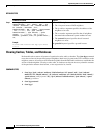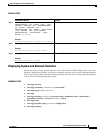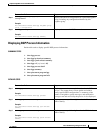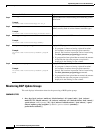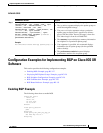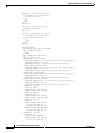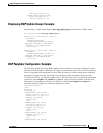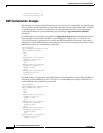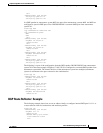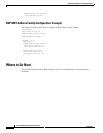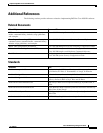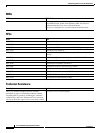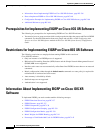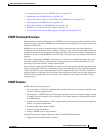
Implementing BGP on Cisco IOS XR Software
Configuration Examples for Implementing BGP on Cisco IOS XR Software
RC-130
Cisco IOS XR Routing Configuration Guide
OL-14356-01
route-policy pass-all in
route-policy pass-all out
BGP Confederation: Example
The following is a sample configuration that shows several peers in a confederation. The confederation
consists of three internal autonomous systems with autonomous system numbers 6001, 6002, and 6003.
To the BGP speakers outside the confederation, the confederation looks like a normal autonomous
system with autonomous system number 666 (specified using the bgp confederation identifier
command).
In a BGP speaker in autonomous system 6001, the bgp confederation peers command marks the peers
from autonomous systems 6002 and 6003 as special eBGP peers. Hence, peers 171.69.232.55 and
171.69.232.56 get the local preference, next hop, and MED unmodified in the updates. The router at
160.69.69.1 is a normal eBGP speaker, and the updates received by it from this peer are just like a normal
eBGP update from a peer in autonomous system 666.
router bgp 6001
bgp confederation identifier 666
bgp confederation peers
6002
6003
exit
address-family ipv4 unicast
neighbor 171.69.232.55
remote-as 6002
exit
address-family ipv4 unicast
neighbor 171.69.232.56
remote-as 6003
exit
address-family ipv4 unicast
neighbor 160.69.69.1
remote-as 777
In a BGP speaker in autonomous system 6002, the peers from autonomous systems 6001 and 6003 are
configured as special eBGP peers. Peer 170.70.70.1 is a normal iBGP peer, and peer 199.99.99.2 is a
normal eBGP peer from autonomous system 700.
router bgp 6002
bgp confederation identifier 666
bgp confederation peers
6001
6003
exit
address-family ipv4 unicast
neighbor 170.70.70.1
remote-as 6002
exit
address-family ipv4 unicast
neighbor 171.69.232.57
remote-as 6001
exit
address-family ipv4 unicast
neighbor 171.69.232.56
remote-as 6003
exit
address-family ipv4 unicast
neighbor 199.99.99.2
remote-as 700



